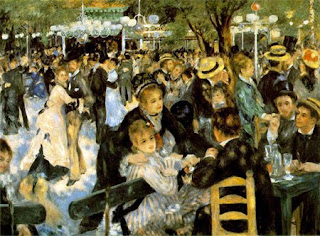Marc Chagall, Above the Town, 1887, oil on canvas.
I’m a big fan of The Weepies. Their song, Painting by Chagall, has always struck me as romantic and raw but I’d never seen in any work by Chagall so the exact meaning and symbolic nature of the song I was unsure of.
It all makes sense now.
The chorus-
“Sometimes rain that's needed falls
We float like two lovers in a painting by Chagall
All around is sky and blue town
Holding these flowers for a wedding gown
We live so high above the ground, satellites surround us.”
Beautiful and idyllic without Chagall’s painting in mind, Above the Town makes the lyrics all the more enchanting. The two lovers in the painting could be on their way to elope or simply on a voyage on the gusts of love. Either way, it’s all equally charming to me. Maybe even wishful thinking. But that’s what Chagall’s paintings were all about.
Chagall was known for capturing somewhat whimsical scenes. This painting touches on the essence of childhood with simple lines and warm colors while still carrying an air of complexity with the mere subject matter of two lovers.
The Weepies song ends with the line, “Still everybody says that if they had the chance they'd fly like we do.”
Who knows, maybe Chagall was trying to say that love can make you feel like a kid; free. And who wouldn’t want that?







